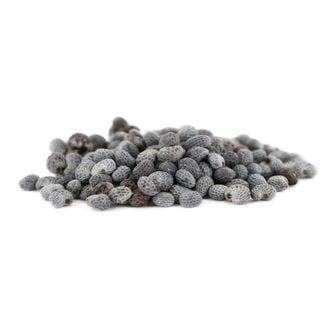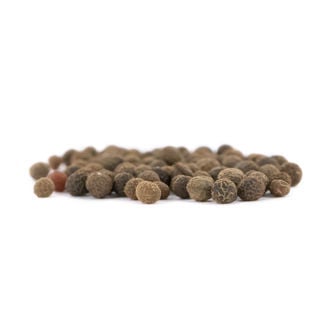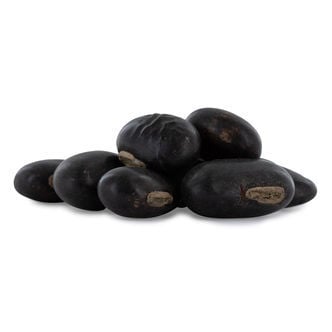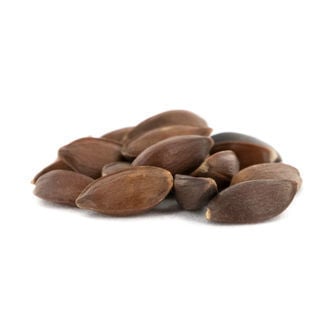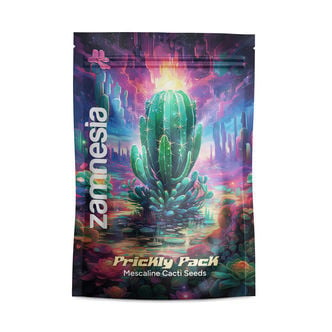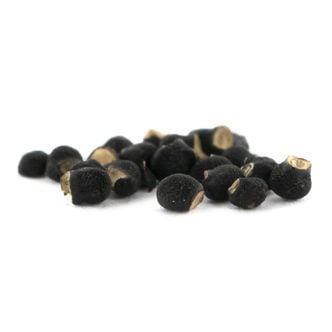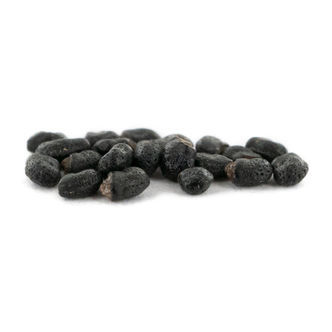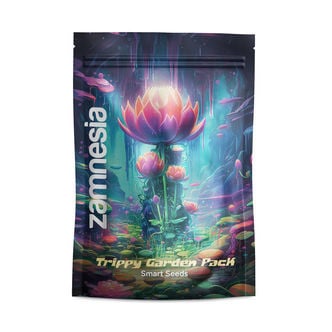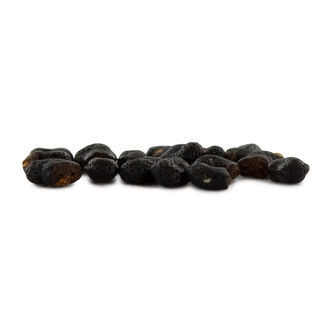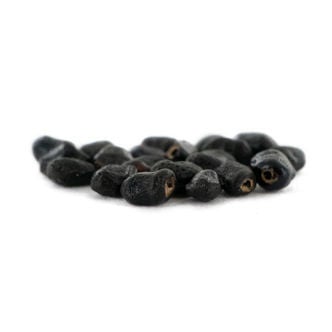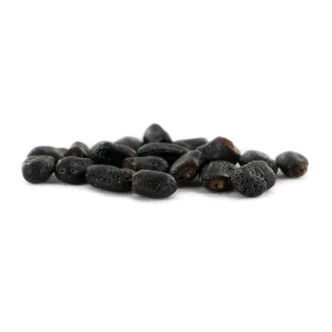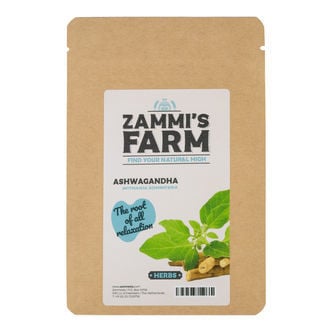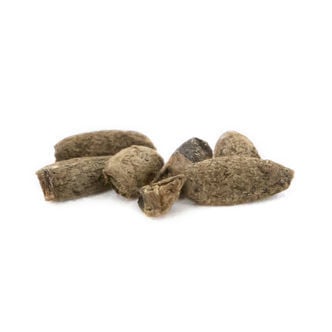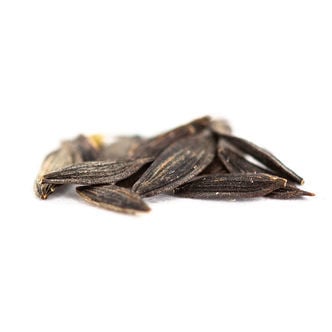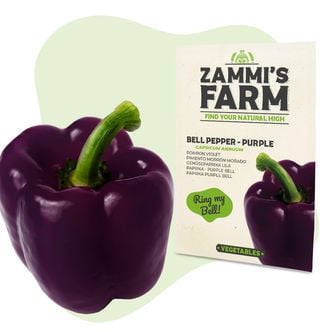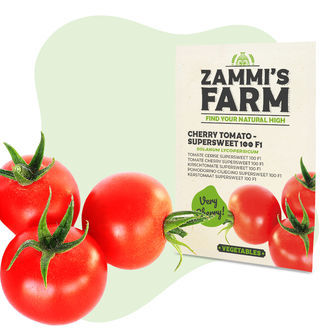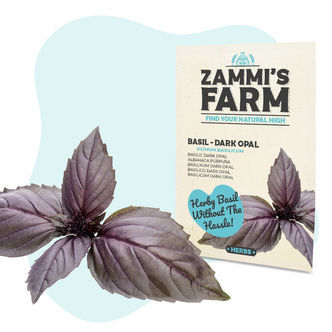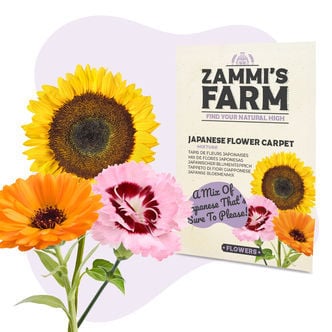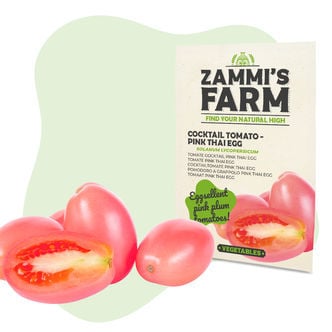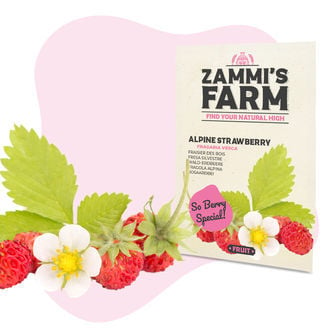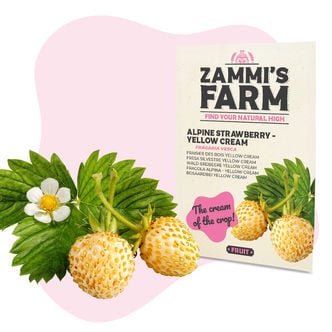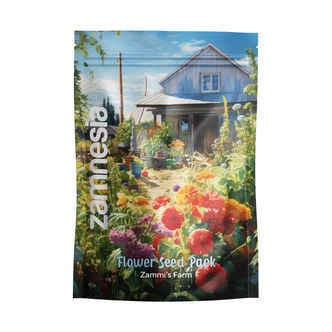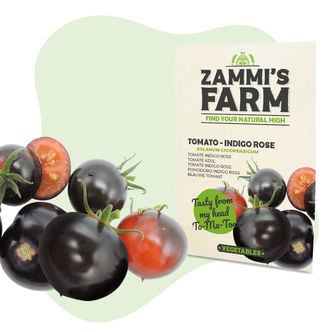All Seeds
Want to give your garden a boost, but unsure of what to pick up? Have no fear! We've arranged all of our plant seeds in one place! This way, you can see exactly what's on offer, without the risk of missing anything. Whether you're looking to spruce up your growing space with colourful flowers or want to cultivate your own fruits and vegetables, we've got you covered.
With seeds catering for all experience levels and environments, you're sure to find at least one product that meets your needs and preferences. While certain varieties require a more hands-on approach, plenty of others offer a relaxed and easygoing cultivation experience. So, if you're thinking of getting into gardening, or rekindling a passion, let Zamnesia's Plantshop guide you to great plants that will flourish in no time.
Poppy (Papaver somniferum) Seeds
Poppy (Papaver somniferum) is the plant from which opium, morphine, and heroin are made. The poppy seeds themselves don’t contain any alkaloids. With Zamnesia Poppy Seeds, you can grow your own poppy plants at home with ease!
California Poppy (Eschscholzia californica) 100 seeds
California poppy makes a stunning addition to many ornamental gardens, earning attention due to its bright and vibrant orange shades.
Velvet bean | Mucuna pruriens
The Velvet bean (Mucuna pruriens) is a tropical plant that has long been used in many cultures around the world.
Green Mormon Tea | Ephedra viridis Seeds
Green Mormon tea (Ephedra viridis), also known as green ephedra or Indian tea, is a shrub that grows in dry areas of the Western United States. 20 seeds
Prickly Pack - Mescaline Cacti Seeds
This variety pack of cactus seeds contains everything you need to start cultivating your own mescaline cacti at home! There are numerous species of mescaline-containing cacti, and each one has a slightly different combination of alkaloids, giving each distinct effects. With this pack, you have a range of mescaline cactus seeds to experiment with.
Peyote (Lophophora williamsii) 20 seeds
With our freshly harvested high quality Lophophora williamsii (Peyote) seeds you can now grow your own Peyote cacti at home. As compared to fully grown Peyote cacti plants, cultivating your own Peyote can be more economic because you can grow them at relatively low cost. Plus, being able to watch your Peyote seeds grow to full-grown flowering plants can make for a fascinating hobby all on its own!
San Pedro (Echinopsis pachanoi) 20 seeds
Echinopsis pachanoi, the original San Pedro cactus is one of the sacred cacti of South America. For centuries, this cactus has played an important role in Shamanic culture. The cactus is a native to Bolivia and contains psychoactive compounds, the most important one Mescaline. With our fresh Echinopsis pachanoi (San Pedro) seeds you can now easily grow your own San Pedro cacti at home!
Trippy Garden Pack - Smart Seeds
This Trippy Garden Pack contains a range of different seeds that will flourish into plants containing legal psychoactive compounds. If a herb garden doesn't quite cut it for you, then these seeds will give you a real project. Experiment with a range of psychoactive plants and see which you like the best.
Peruvian Torch (Echinopsis peruviana) 20 seeds
Echinopsis peruviana, better known as the Peruvian Torch cactus is another of the hallucinogenic cacti that is native to South America. The Peruvian Torch contains the psychoactive alkaloid mescaline which makes for powerful, altered states of consciousness. With our fresh Peruvian Torch (Trichocereus peruvianus) seeds you can now grow this sacred cactus easily at home.
Echinopsis macrogona (Trichocereus macrogonus) 20 seeds
Echinopsis macrogona (AKA Trichocereus macrogonus) is a sacred cactus. Like the Peruvian torch cactus, Echinopsis macrogona contains mescaline which gives it powerful psychedelic and hallucinogenic properties. With the Echinopsis macrogona seeds available at Zamnesia you can now grow this sacred cactus at home!
Bolivian Torch (Echinopsis lageniformis) 20 seeds
The Bolivian Torch (Echinopsis lageniformis) is one of the psychedelic cacti of South America that plays an important role in Shamanic rituals. It is similar in appearance to the San Pedro cactus but with fewer and wider ribs. Like the San Pedro cactus, the Bolivian Torch contains a number of psychoactive alkaloids including the powerful psychedelic compound Mescaline.
Ashwagandha (Withania somnifera) Seeds
Ashwagandha (Withania somnifera) is a shrub native to India, and it has been used for many years in the Ayurvedic tradition. Attractive and easy to cultivate, why not try growing it in your very own garden?
Klip Dagga (Leonotis nepetifolia) Seeds
Native to Africa and Southern India, klip dagga is a colourful plant with a unique appearance. Fortunately, it's also pretty simple to grow. Sow the seeds indoors at the end of April in moist soil, and keep the same conditions until they germinate. Then, move them outside so they can flourish. Provide them with plenty of light and warmth, and harvest leaves and flowers when ready.
Wild Lettuce (Lactuca virosa) Seeds
Wild lettuce (Lactuca virosa) thrives in cool and cold conditions and produces edible leaves throughout most of the year, even into winter. Plus, it's full of nutrients. Get growing!
Paprika Purple Bell (Capsicum annuum) Seeds
Add some vibrant violet colours to your garden! Paprika Purple Bell is the way to go. Get these seeds sown and started under glass between March and May, and you'll be greeted with a bevvy of purple peppers come summertime. Just house them in moist soil with a consistent temperature of around 20-25°C; you can't go wrong. With sweet flavours, they make the perfect addition to all kinds of dishes.
Cherry Tomato 'Supersweet 100 F1' (Solanum lycopersicum) Seeds
The Supersweet 100 cherry tomato hybrid is one of those plant hybrids that says it all in its name: these plants produce extremely sweet fruit and, in the right conditions, can grow into long vines capable of producing 100 or more tomatoes at once. Note that this is a tall tomato variety that needs full sun, support from stakes/trellises, plenty of care, and a lot of natural fertilizer to thrive.
Basil 'Dark Opal' (Ocimum basilicum) Seeds
Like normal basil, Dark Opal basil is best sown indoors. Keep your seedlings on a warm windowsill as they develop their roots and first leaves, then bring them outside in mid/late spring. Like most herbs, basil likes well-draining soil and partial shade/full sun, and is best watered sparingly (in the morning to give the roots time to dry). Use in a variety of cuisines and as a natural insecticide.
Japanese Flower Carpet Seeds
Give your garden a burst of colour with Japanese flower carpet seeds. Ideal for flowerbeds or rows, sow seeds in April, and come summer, you'll see the fruits of your labour. Generally low-maintenance, just ensure the flowers are regularly watered and can flourish in the sun, and they'll bloom effortlessly, allowing you to enjoy all the colour and vibrancy they provide.
Cocktail Tomato 'Thai Pink Egg' (Solanum lycopersicum) Seeds
Thai Pink Egg Tomatoes originate from Thailand where they're treasured for their bright colour and deliciously sweet flesh. While they grow very similarly to other tomato (Solanum lycopersicum) varieties, Thai Pink Egg tomatoes like a little more water than usual, and hold up better in rainy climates as well as heat waves. Remember to prune and fertilize tomatoes regularly for bountiful harvests.
Alpine Strawberry (Fragaria vesca) Seeds
Alpine strawberry (Fragaria vesca) loves full sun or partial shade, though it's best to protect plants from the afternoon sun in hot climates. While Fragaria vesca can tolerate some shade, plants produce more fruit in bright, sunny locations. Grow Fragaria vesca in well-draining, fertile, and moist soil. Alpine strawberries have a strong flavour and can be enjoyed fresh or made into conserves.
Alpine Strawberry - Yellow Cream (Fragaria vesca) Seeds
Easy to look after, Alpine Strawberry prefers sunny balconies, windowsills or garden beds. Germinate indoors. Scatter your seeds on the surface of the soil as they need light. Lightly cover with soil and keep moist with a spray bottle. Seeds need 3–4 weeks to sprout and once they have 4 leaves, they can be transplanted into rich soil and placed outside. Expect fruit same or following year.
Flower Seed Pack - Zammi's Farm
This Flower Seed Pack contains a variety of seeds from Zammi's Farm that will make your garden absolutely beautiful. Distribute in a garden bed or on your lawn, and then just sit back and wait for this veritable meadow to flourish. Whether you want excessive beauty or food for pollinators, it's all in here.
Indigo Rose Tomatoes (Solanum lycopersicum) Seeds
Indigo Rose is a heirloom tomato variety (Solanum lycopersicum) that produces stunning purple/black fruit. Like other tomato varieties, Indigo Rose is best grown in full sun and highly fertile soil, regularly pruned/pinched, and supported with stakes/towers/trellises. Harvest when the shade-facing side of the tomatoes are a soft pinkish-red colour and the sun-facing side a deep purple/black.
Grandian Strawberry F1 (Fragaria x ananassa) Seeds
Few things are as rewarding as picking your own strawberries. These Granadian F1 strawberries produce large, plump, and deliciously sweet fruits. Start them off early in a protected seedbed when temperatures reach 20°C and transplant them into large pots or an open field in early summer. Pick your berries when they're plump and red, and resow your seeds every year.













 United States
United States
